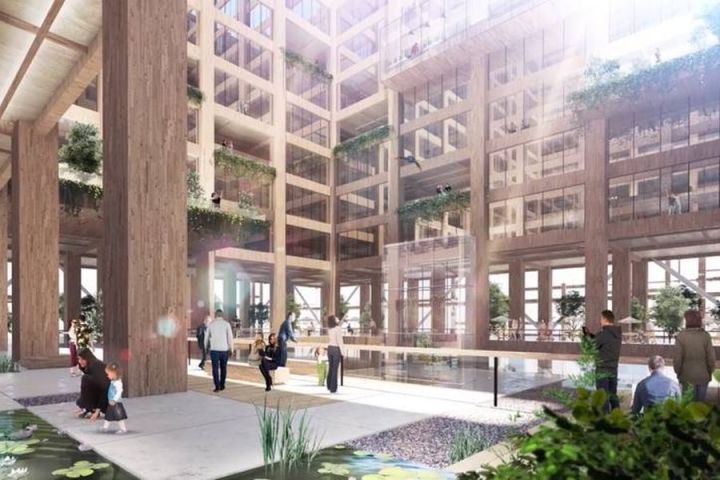The Japanese architectural and construction firm Sumitomo Forestry Co. has announced plans for a 70-story tall skyscraper in Tokyo constructed of wood. Known as the W350 project, the structure will be 1,148 feet tall and will include residential apartments and public spaces on multiple floors, mixed with hotel, office, and retail space.
The Guardian, which dubbed it the “Plyscraper,” noted that the $5.6 billion cost of the project will be nearly twice that of a similar glass-and-steel conventional building. The company says that the cost of the project will decline due to technological advances, as the high-rise is not scheduled for completion until 2041.
In an outline of the project, Sumitomo said the structure would be made of 90 percent wooden materials, with crisscrossing steel braces to better withstand Japan’s high seismic activity.
In 2010, Japan enacted an ordinance requiring construction companies to use wood for public buildings. Sumitomo aims to take that a step further and “Change Cities into Forests” by using materials that are more environmentally friendly.
Wooden high-rise structures are gaining popularity around the world. Portland recently approved construction of the tallest all-wood building in the U.S., an 11-story office and apartment building known as Framework.
Brock Commons, a residential structure at the University of British Columbia in Vancouver, is currently the tallest wooden building in the world at 174 feet tall. The building speed was a big factor, John Metras of UBC explained to ArchDaily. “We found that working with wood, we could reduce timelines for construction,” he said. “The assembly of the wood structure went up incredibly quickly, faster than we even expected.”
Vancouver may not hold the record for long, however, as an ambitious new project planned for Chicago is a residential high-rise that’s 800 feet and 80 stories tall.
The W350 project is scheduled for completion to coincide with the company’s 350th anniversary. Balconies on all four sides will help vegetation grow along the outside of the high-rise, all the way to the top floor. The company says the new building will be an example of “urban development that is kind for humans,” with more high-rises constructed from wood and covered with greenery “making over cities as forests.”



